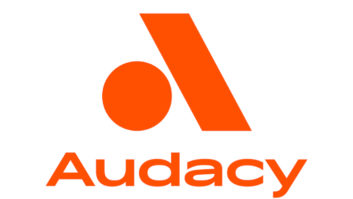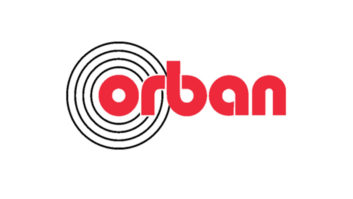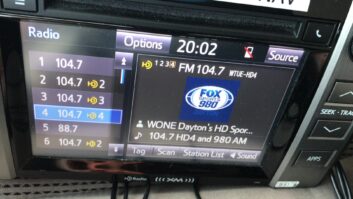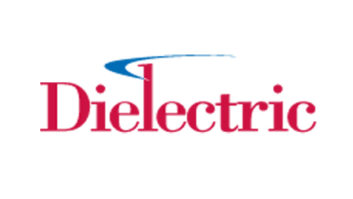Higher-powered Sidebands
May 2, 2008 12:00 PM, By Chriss Scherer, editor
Figure 1. The comparative level difference of increased digital sidebands.
Click image to enlarge
As the HD Radio system is implemented in stations, the technology itself is in continuing development. Recently, an idea to improve the coverage of digital signals in the hybrid mode was proposed by broadcasters and endorsed by the NAB by increasing the level of the digital signal by 10dB. To determine the effectiveness of this increase, CBS conducted several tests on KROQ-FM in Los Angeles using the increased digital sideband level. The results were examined with regard to building penetration of the HD Radio signals.
The results of the study were presented in a session at the 2008 NAB Show by Glynn Walden, senior VP of engineering for CBS Radio. The study shows the improvements of received signals on indoor receivers when the digital carriers are increased from -20dBc to -10dBc.
The authorized FM IBOC hybrid transmission mode places digital subcarriers on both sides of the host analog transmission. Each sideband uses 191 subcarriers at a power level of -41dBc. The total power of the 382 subcarriers is -20dBc below the total power of the analog host. Figure 1 shows the relative level of the authorized and tested digital carriers.
The test setup
The CBS tests were carried out on KROQ-FM, whichhas transmitted an IBOC signal since Sept. 27, 2002. The station’s analog power is 5.6kW ERP. For the tests, the station used a Harris Flexstar exciter and Z-16 Plus transmitter using common amplification for the hybrid signal. The transmitter feeds a three-bay antenna. At -20dBc, the digital signal is transmitted at 56W, while at the -10dBc level, the digital signal is transmitted at 560W. The station received FCC authorization for the experimental operation on Feb. 16, 2007.
The CBS engineering team selected 10 buildings of different construction type and usage for the tests. Table 1 shows the locations and types of buildings tested. The purpose of the test was to determine the ability of the analog and digital signals to penetrate buildings of various types, heights and sizes. The goal was to show that increasing the digital carrier level would improve building penetration, as well as provide some attenuation data for the various building types. SiteHeight (stories)Floor Measured KROQ transmittern/an/a KROQ studio/office conference room21 Chubb Insurance building3117 Eight-unit apartment building22 5670 Wilshire high-rise office building302 SBS medium-rise office building41 Hollywood/Highland entertainment complex33 Single-family residence11 32-unit apartment complex22 Underground parking, Studio City Place22 below ground Underground parking, Ralph’s Shopping Center22 below ground
Table 1. The various sites tested. See these sites plotted on a map.
For the measurements, a common FM whip antenna fed a -3dB splitter to feed an Anritsu spectrum analyzer and a Boston Acoustics Recepter HD receiver.
Outside each location, visual observation on the spectrum analyzer showed the signal was subject to minimal multipath interference. This also provided the baseline reference unattenuated signal level. With the transmitter operating at the -20dBc level, the test setup was moved into the structure and a measurement was taken near a window. The test setup was then moved to an interior location of the structure to find a position where the digital signal failed. The distance from the window location was noted.
The digital transmitter signal level was then increased to -10dBc and the test setup was moved even further into the building to find the digital signal failure point. This distance from the original window position was also noted in meters. Audio and the spectrum analyzer display output were recorded for all measurements. The building attenuation was calculated by subtracting the inside measurement from the outside measurement.
The results of the tests are shown in Table 2. As expected, the -10dBc digital signal level provided better building penetration than the -20dBc signal level. In 75 percent of the sites tested, the analog signal quality was rated as noisy, poor or nonexistent. The -20dBc digital signal was nonexistent in these locations. When the digital carrier was raised to -10dBc, the digital signal could be received reliably in 75 percent of the test buildings. It was possible to receive the digital signal in selected location in the remaining 25 percent of the buildings.
Answers and questions
Table 2. Collected data from the building penetration tests. Measurement heights at Wilshire and the 32-unit apartment were higher inside than outside, hence the higher insider RF level. The negative attenuation is not included in the attenuation calculations.
Click here to enlarge.
CBS notes that the goal of the test to provide quantitative numbers for the various signal levels was not completely met since reception of the digital signal at -20dBc was only possible in one building while reception at -10dBc was uniformly possible throughout all but two of the buildings. Despite the lack of quantitative results, the qualitative information shows that the digital signal increase resulted in robust signal reception. CBS also notes that the improvements in digital reception did not affect the quality or reception of the analog signal.
The underground garage tests were designed to evaluate reception in a structure with severe building attenuation and obstruction. In Studio City Place parking, the -20dBc signal failed at the bottom of the ramp even though analog reception was good. At -10dBc, digital reception was possible almost throughout the garage even when analog reception was noisy.
In Ralph’s Parking, the -20dBc digital signal failed about 30 feet into the building. At -10dBc, the digital signal could be received about 165 within the building. At this same point, the analog signal quality was deemed not acceptable to most listeners.
The study concludes that except for locations near the transmitter site, a digital signal at -20dBc is difficult to receive at an indoor location, while a digital signal at -10dBc yields a signal level that provides reception quality better than analog coverage. CBS notes that the power increase would help promote the widespread adoption of digital radio.
Thanks to Glynn Walden and CBS Radio for supplying the report details to prepare this article.












